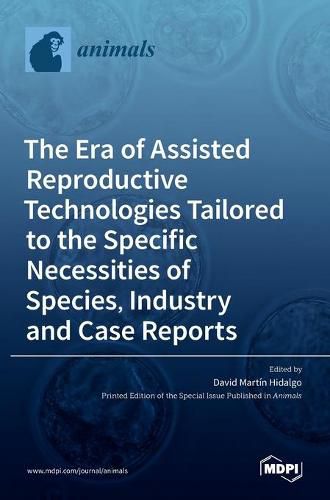Readings Newsletter
Become a Readings Member to make your shopping experience even easier.
Sign in or sign up for free!
You’re not far away from qualifying for FREE standard shipping within Australia
You’ve qualified for FREE standard shipping within Australia
The cart is loading…






This title is printed to order. This book may have been self-published. If so, we cannot guarantee the quality of the content. In the main most books will have gone through the editing process however some may not. We therefore suggest that you be aware of this before ordering this book. If in doubt check either the author or publisher’s details as we are unable to accept any returns unless they are faulty. Please contact us if you have any questions.
Nowadays, assisted reproductive technologies (ARTs) have a pivotal role not only in achieving fertilization in subfertile animals, but they are also involved in the management of the herd, decreasing disease spread and even allowing offspring sex selection. Nonetheless, there are differences between species or even within species that have led researchers worldwide to focus on those differences in order to bypass these specific difficulties. This Special Issue, titled The Era of Assisted Reproductive Technologies Tailored to the Specific Necessities of Species, Industry and Case Reports and published in Animals, is composed of 12 original manuscripts and three reviews that offer an overview of current and future ARTs used to improve reproductive outcomes, mainly focused on farm animals, such as horse, pig, bovine, rabbit and ovine species. Thus, the Special Issue covers information from the classical point of view, including comparative studies of different semen extenders, to the most advanced technologies of sperm selection by thermotaxis or chemoattractants, as well as the improvement of sperm features by red light irradiation. The female and embryo contributions to ART outcomes are also covered, for instance, with a study that improves our knowledge by the metabolomic description of follicular fluid composition or the description of better culture conditions of oocytes. In brief, this Special Issue provides a balanced overview of emerging techniques and technologies used to preserve, improve, rescue or even create fertility for domestic farm animals with high economic impact.
$9.00 standard shipping within Australia
FREE standard shipping within Australia for orders over $100.00
Express & International shipping calculated at checkout
This title is printed to order. This book may have been self-published. If so, we cannot guarantee the quality of the content. In the main most books will have gone through the editing process however some may not. We therefore suggest that you be aware of this before ordering this book. If in doubt check either the author or publisher’s details as we are unable to accept any returns unless they are faulty. Please contact us if you have any questions.
Nowadays, assisted reproductive technologies (ARTs) have a pivotal role not only in achieving fertilization in subfertile animals, but they are also involved in the management of the herd, decreasing disease spread and even allowing offspring sex selection. Nonetheless, there are differences between species or even within species that have led researchers worldwide to focus on those differences in order to bypass these specific difficulties. This Special Issue, titled The Era of Assisted Reproductive Technologies Tailored to the Specific Necessities of Species, Industry and Case Reports and published in Animals, is composed of 12 original manuscripts and three reviews that offer an overview of current and future ARTs used to improve reproductive outcomes, mainly focused on farm animals, such as horse, pig, bovine, rabbit and ovine species. Thus, the Special Issue covers information from the classical point of view, including comparative studies of different semen extenders, to the most advanced technologies of sperm selection by thermotaxis or chemoattractants, as well as the improvement of sperm features by red light irradiation. The female and embryo contributions to ART outcomes are also covered, for instance, with a study that improves our knowledge by the metabolomic description of follicular fluid composition or the description of better culture conditions of oocytes. In brief, this Special Issue provides a balanced overview of emerging techniques and technologies used to preserve, improve, rescue or even create fertility for domestic farm animals with high economic impact.